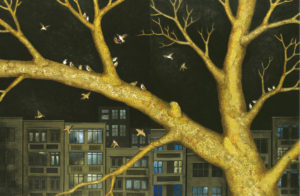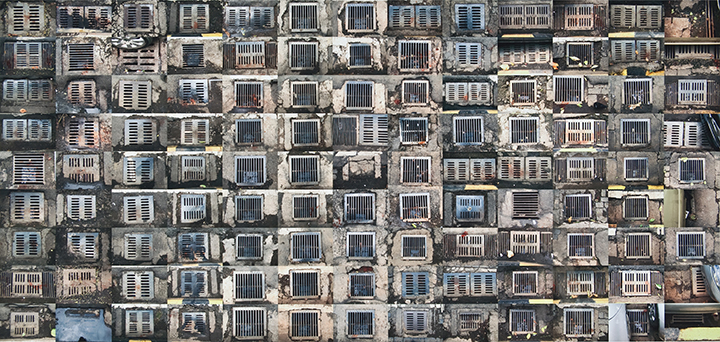Showcasing the different aspects of the ever-changing urban landscape of India, the exhibition at the Kiran Nadar Museum of Art beautifully captures the nuances of metropolitan architecture
Depicting dreams and fears of citizens living in third world metropolises, featuring their everyday lives, here’s an exhibition aptly titled ‘City Tales’.
This online exhibition brings together the works of twenty-one artists examining and exploring the city from the lens of an immersive lifeworld.
“The show invites the viewer to a broad spectrum of artistic responses invoked by cities and their changing landscape over the years — as a hostile machine, a social theatre, hegemonic structure, utopian dream, symbol of progress as well as a spectacle of pleasure and paranoia. These contradictory yet compelling representations of urban experiences are layered within the visual expressions of post-independent Indian artists, many of whom were migrants from the rural hinterland into the city. Despite a sense of dystopia attached to the postcolonial city, it also offers an alternative space of promises,” says the curator.
Reflecting on this creative ambiguity of the postcolonial urban, Kiran Nadar Museum of Art offers a cross-section from its collection With the exhibition structured in sections, the artworks are presented through the following sub-themes – Junkspace-Archive, The Urban Dreamscape, Ruins of the City: Fragments of Redemption and A Curatorial Epilogue.
‘Junkspace-Archive’ reflects a landfill littered with the abandoned projects of modernity as well as ecological/traditional remnants, that appears in Sheba Chhachhi’s memory map of water bodies in Old Delhi, Atul Bhalla’s sewerage covering photographs from Mumbai, and Sudhir Patwardhan’s city-compositions that exceed and disrupt the conventional rules of pictorial construction. Hema Upadhyay’s densely crammed shantytowns with their shiny tin roofs, Vivan Sundaram’s outlandish ‘masterplan’ and Nataraj Sharma’s bare structures of modular buildings further extend the notion of the city as “junkspace,” an accidental archive of failed urbanism.
On the other hand ‘The Urban Dreamscape: A Theatre of Utopian Promises and Surreal Anxieties’ is a surreal stage for enacting collective fantasies and personal anxieties. It brings forth Pooja Iranna’s fragile architectural models made of stapler pins, and Rathin Barman’s concrete blocks narrate the unbearable lightness of being a migrant. Nalini Malani’s film Utopia catalogues the artist’s view of the ever-expanding gap between the developing and the underdeveloped in a megalopolis.

While the last segment ‘Ruins of the City: Fragments of Redemption’ approaches the Indian city as a melancholic ruin through Ram Kumar’s decomposing Benaras, Bikash Bhattacharjee’s Calcutta of the Naxalite-1970s, and Gulammohammed Sheikh’s incinerated Ahmedabad brought down by communal riots. Ashim Purkayastha and Anita Dube’s installations respectively demonstrate the mutability of urban ruins into escape-shelters and souvenirs of freedom.
A Curatorial Epilogue examines how an alternative and therapeutic idea of the city emerges in Nilima Sheikh’s homage to migrant female workers in the global healthcare industry. In addition to that, Jayashree Chakravarty’s archive of a healing nature tells us how the postcolonial urban, despite its dystopian overgrowth, still nudges humanity to survive; and what should the city, in turn, return and retrieve for its own survival.
The exhibition can be viewed at the website of Kiran Nadar Museum of Art
(Cover: Atul Bhalla’s, Mumbai Walk, 2007)





